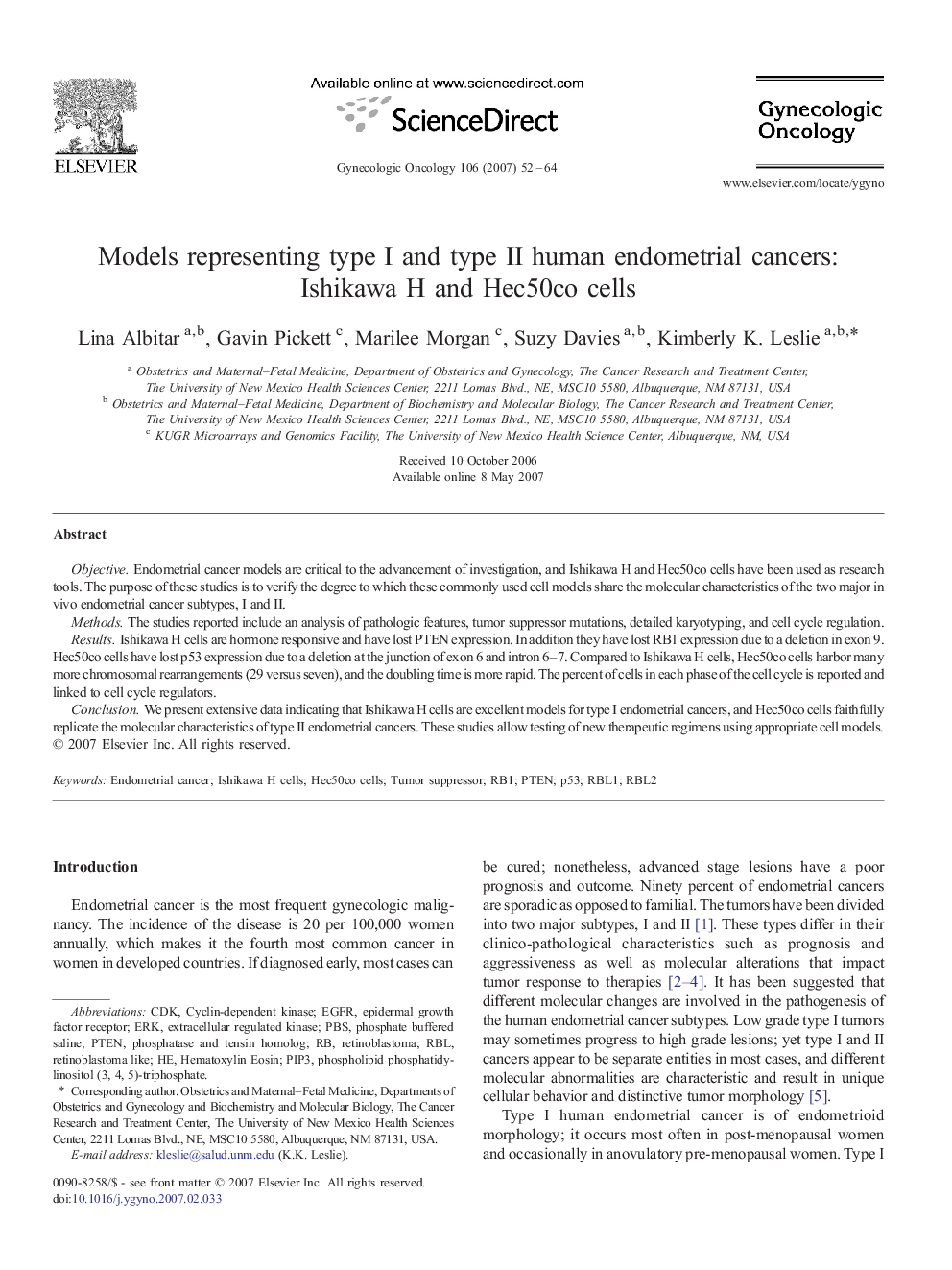| Article ID | Journal | Published Year | Pages | File Type |
|---|---|---|---|---|
| 3947569 | Gynecologic Oncology | 2007 | 13 Pages |
ObjectiveEndometrial cancer models are critical to the advancement of investigation, and Ishikawa H and Hec50co cells have been used as research tools. The purpose of these studies is to verify the degree to which these commonly used cell models share the molecular characteristics of the two major in vivo endometrial cancer subtypes, I and II.MethodsThe studies reported include an analysis of pathologic features, tumor suppressor mutations, detailed karyotyping, and cell cycle regulation.ResultsIshikawa H cells are hormone responsive and have lost PTEN expression. In addition they have lost RB1 expression due to a deletion in exon 9. Hec50co cells have lost p53 expression due to a deletion at the junction of exon 6 and intron 6–7. Compared to Ishikawa H cells, Hec50co cells harbor many more chromosomal rearrangements (29 versus seven), and the doubling time is more rapid. The percent of cells in each phase of the cell cycle is reported and linked to cell cycle regulators.ConclusionWe present extensive data indicating that Ishikawa H cells are excellent models for type I endometrial cancers, and Hec50co cells faithfully replicate the molecular characteristics of type II endometrial cancers. These studies allow testing of new therapeutic regimens using appropriate cell models.
